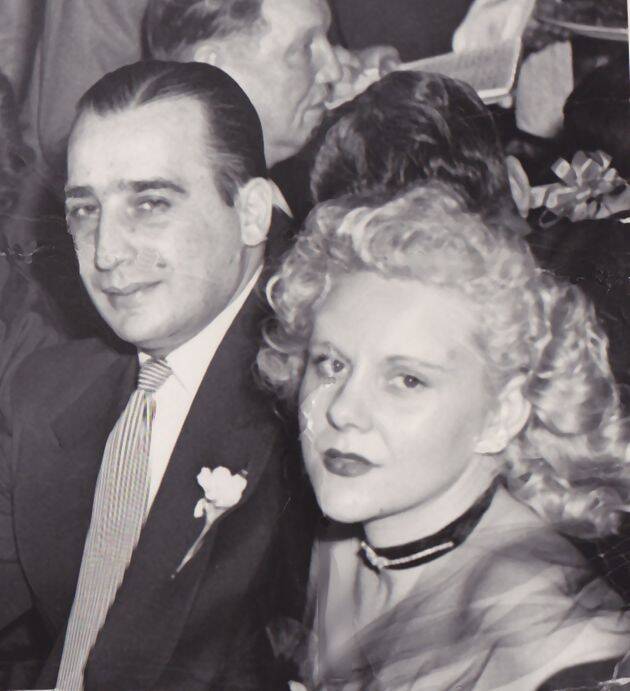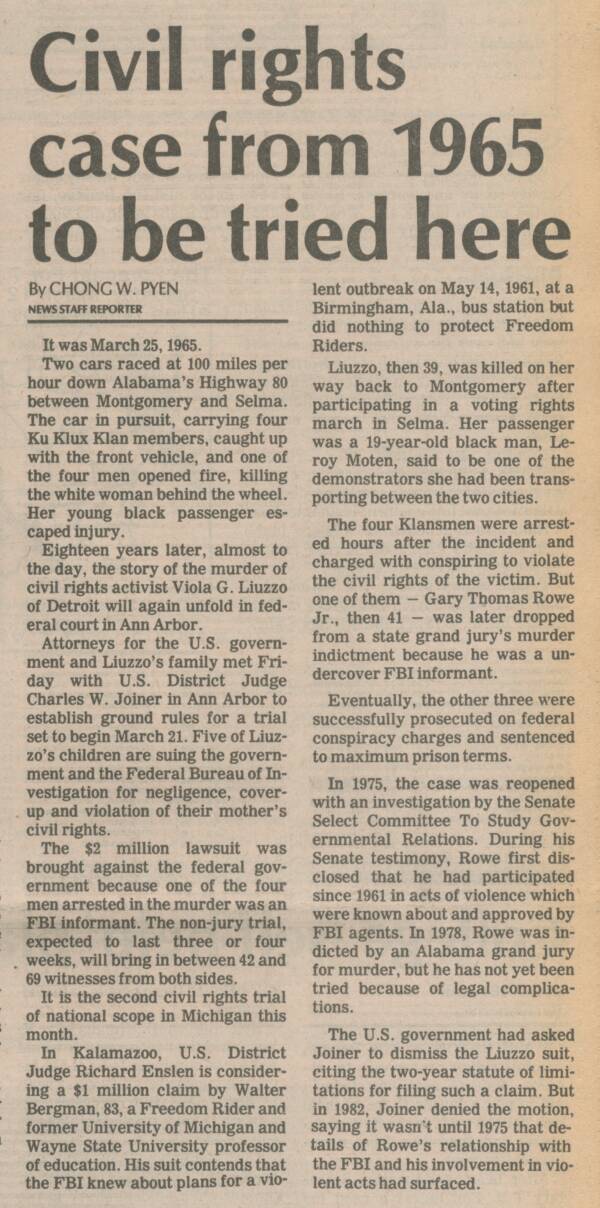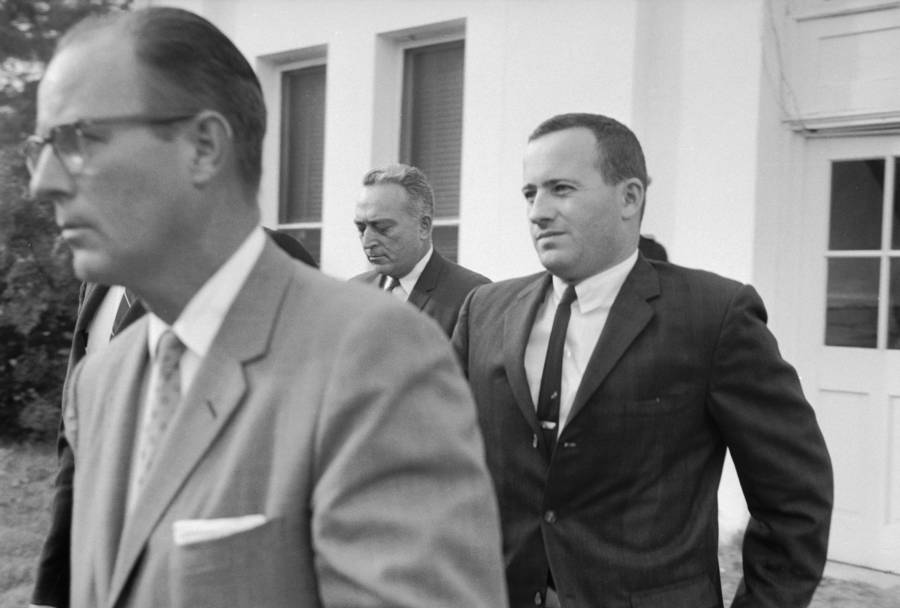Viola Liuzzo drove from Detroit to Alabama to march with Dr. Martin Luther King Jr. She was gunned down by the KKK before she could make it home — and the FBI tried to blame her.

Wikimedia CommonsA close-up of the smashed window and bloodstained door of the car where Viola Liuzzo was killed.
The 1965 Civil Rights Movement is a crucial moment in history. The lives of so many changed because of those who spoke up and stood their ground, and Viola Liuzzo was one of those individuals.
Many of the leaders in the movement went on to become key figures in our history, but the changes didn’t all happen peacefully. Viola Liuzzo was murdered by members of the Ku Klux Klan in Alabama in March 1965.
Viola Liuzzo went to Alabama all the way from Detroit because she wanted to help the Southern Christian Leadership Conference and other Civil Rights Movement leaders like Dr. Martin Luther King Jr. And like many others who were right in the thick of the Civil Rights Movement, she had a tragic end.

The Detroit News archivesA photo of Viola Liuzzo with her partner.
The Start Of The Civil Rights Movement
Adopted in 1870, the Fifteenth Amendment to the United States Constitution technically granted all persons of color the right to vote. Yet nearly 100 years later, people of color were still being prevented from going to the polls in regions that still held on to those old hatreds.
Viola Liuzzo was a woman from Detroit, but she wanted to help pressure change in Alabama, which was a hotbed of racist activity. It was there that Dr. Martin Luther King Jr. decided to make a stand and lead a massive protest march from the city of Selma to the state capital of Montgomery, and Viola Liuzzo believed in him.

Wikimedia Commons A photo of Viola Liuzzo with her young children.
The eyes of the world were on Selma as the protesters’ first attempt at the march was broken up by state police who viciously beat back the crowd using a combination of whips, nightsticks, and tear gas.
Viola Liuzzo was one of many thousands of Americans who watched the brutal scene unfold on live television and decided she could not just sit back and watch. Viola wanted to help in a real way so she made her way down to Alabama to help support the movement.

Wikipedia CommonsA photo of Viola Liuzzo and her partner
Viola Liuzzo, A White Woman From Detroit, Wanted To Help
39-year-old Viola Liuzzo, who was also a mother of five young children, was an active member of her local chapter of the NAACP. When the protesters began their second attempt at the march on March 21, 1965 (this time protected by the National Guard) in Selma, Liuzzo was in the thick of the action, ferrying activists between Selma and Montgomery in her car.

Wikimedia CommonsDr. Martin Luther King Jr. leads the march.
This time the march was a success and King was able to give a speech straight from the steps of the capitol. Later that evening, as Liuzzo was driving one of the protesters back to Selma, another car pulled up beside her, and its occupants opened fire. Liuzzo was struck in the face and killed instantly; her vehicle swerved out of control and into a fence.
The person whom Liuzzo was driving, a 19-year old black teenager named Leroy Moton, had the presence of mind to realize he needed to play dead in order to stay alive, and the killers’ car eventually drove off. Liuzzo was killed instantly. Viola Liuzzo was the only known white woman killed as part of the Civil Rights struggle.

Ann Arbor NewsA news article about Viola Liuzzo’s death on March 12, 1983.
Liuzzo’s murder made national headlines, and President Lyndon Johnson himself made the announcement that her killers had been caught. Over 300 mourners attended her funeral, including King. Michigan Governor George Romney declared that Liuzzo “gave her life for what she believed in, and what she believed in is the cause of humanity everywhere.”
Inside Viola Liuzzo’s Death
The men in the car who had hated the idea of equal rights so much that they shot an innocent woman in the face were all members of the KKK. One of these identified men was Gary Thomas Rowe, who turned out to be an FBI informant working from the inside.

Wikimedia CommonsA memorial to Viola Liuzzo.
The agency’s now-infamous director, J. Edgar Hoover, realized the embarrassment the FBI would suffer once it came out that one of the murderers had been working for the bureau, immediately launched a smear campaign to try and sully Liuzzo’s name.
Within a day of her murder, FBI agents had prepared a report declaring that Liuzzo had been on drugs while she was driving.
Hoover himself sent a memo saying she was “sitting very, very close to the negro in the car; that it had the appearance of a necking party.”

FBI informant Gary Thomas Rowe Jr (right) leaves the court house after his testimony at the Viola Liuzzo murder trial.
The tactics at first appeared successful and it took three trials to reach a guilty verdict against the men who shot and killed Liuzzo. Rowe testified against the other Klansmen in the first two trials, which resulted in a hung jury, followed by acquittals on murder by a jury of all white males.
After yet another trial in federal court jurisdiction, the men were convicted of violating Liuzzo’s civil rights. As for Rowe, he was relocated and given a new identity by the FBI in exchange for his testimony.
The autopsy immediately debunked the drug accusations, and no evidence was ever found to support the FBI’s other claims.

Wikimedia CommonsA close-up of the car in which Viola Liuzzo died.
Rowe, however, would later claim that he had fully embraced his racist role and received the support and encouragement of the FBI to participate in violent activities against the black community. He admitted to killing an unidentified black man during a riot in 1963, insisting that the agency knew all about this other murder.

Facebook / Viola Liuzzo PlaygroundThe statue at Viola Liuzzo Playground.
Due to Liuzzo’s murder, the House Un-American Activities Committee began an investigation into the Ku Klux Klan. Liuzzo’s case was the first time an official investigation implied the KKK was “Un-American,” and this turned out to be a pivotal turning point in history.
Liuzzo’s children would later take the FBI to court, accusing them of negligence in handling their informant Rowe. It never was proven which of the four men had pulled the trigger, but Hoover’s smear campaign failed and Viola Liuzzo would be remembered as a heroine of the Civil Rights movement.
Enjoy this article about Viola Liuzzo? Next, relive the Civil Rights Movement with 55 powerful photos. Then, read about the cause of the Civil War.




